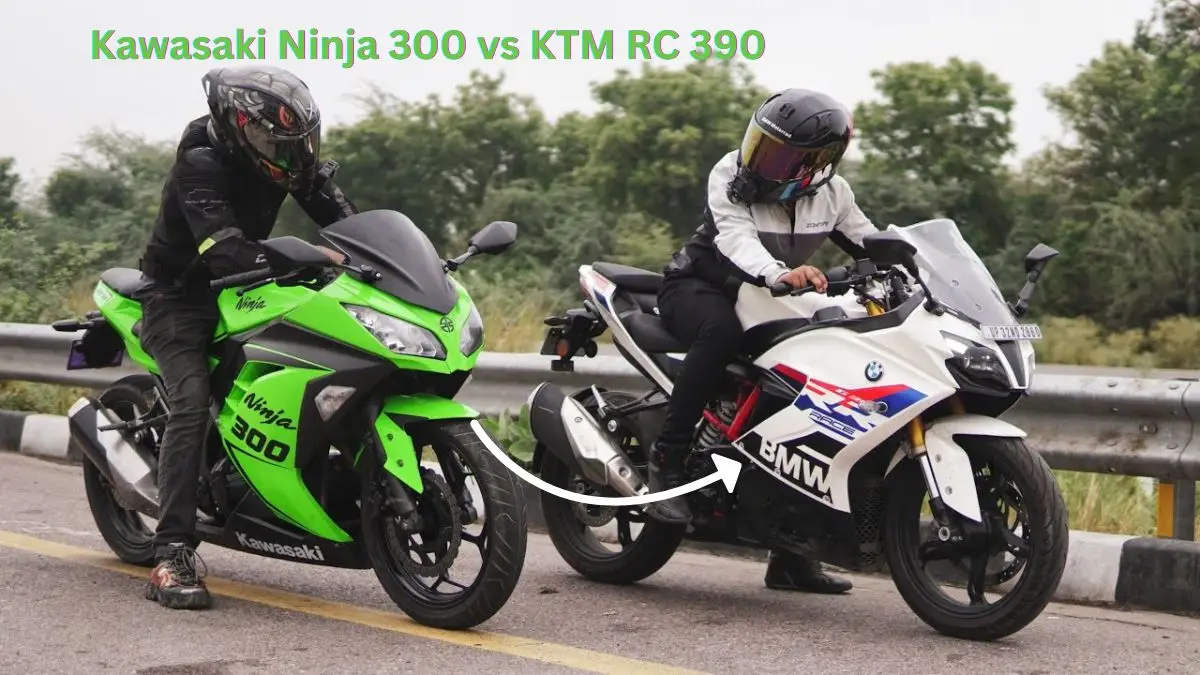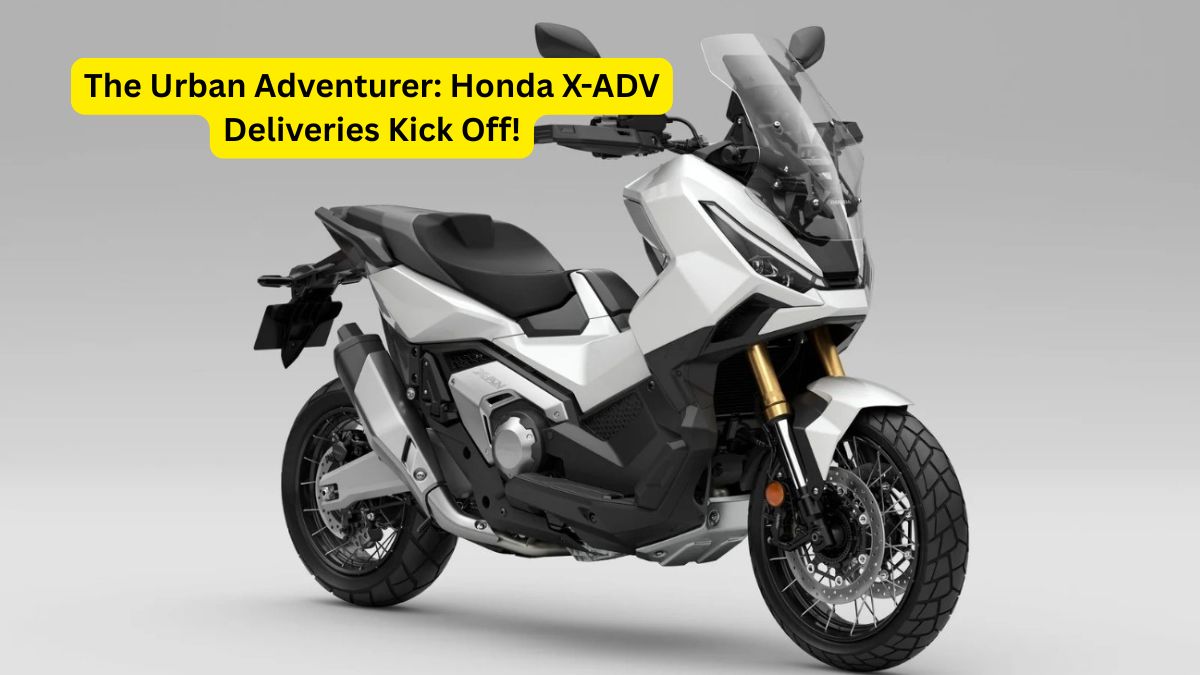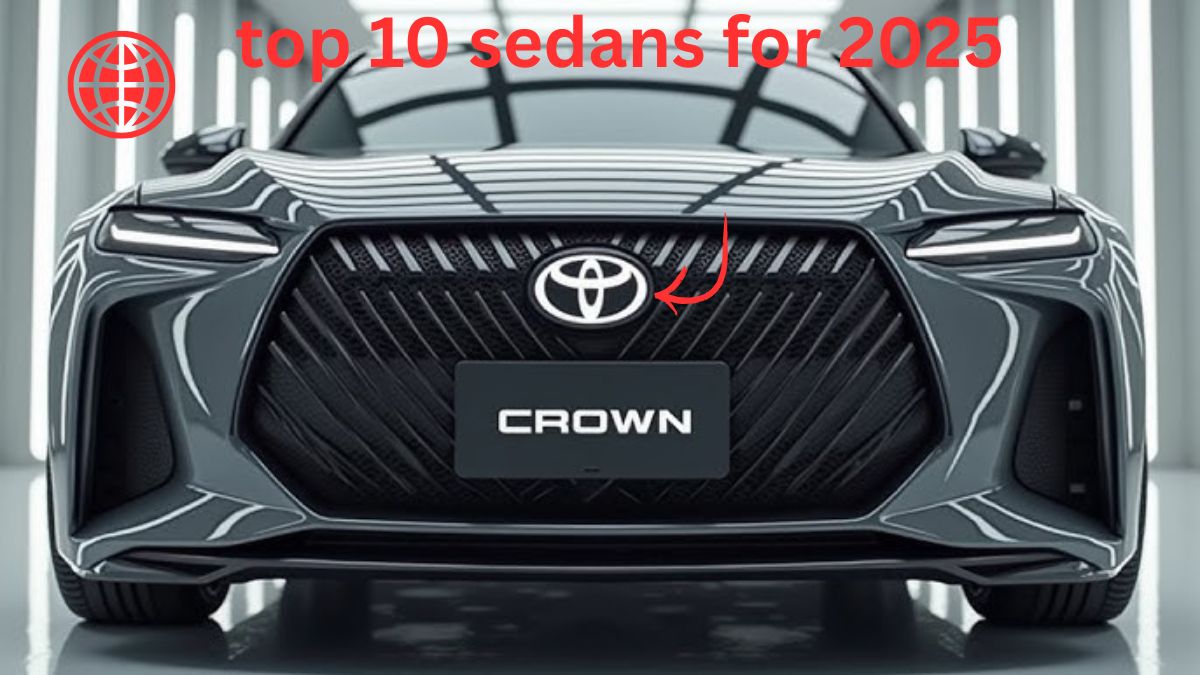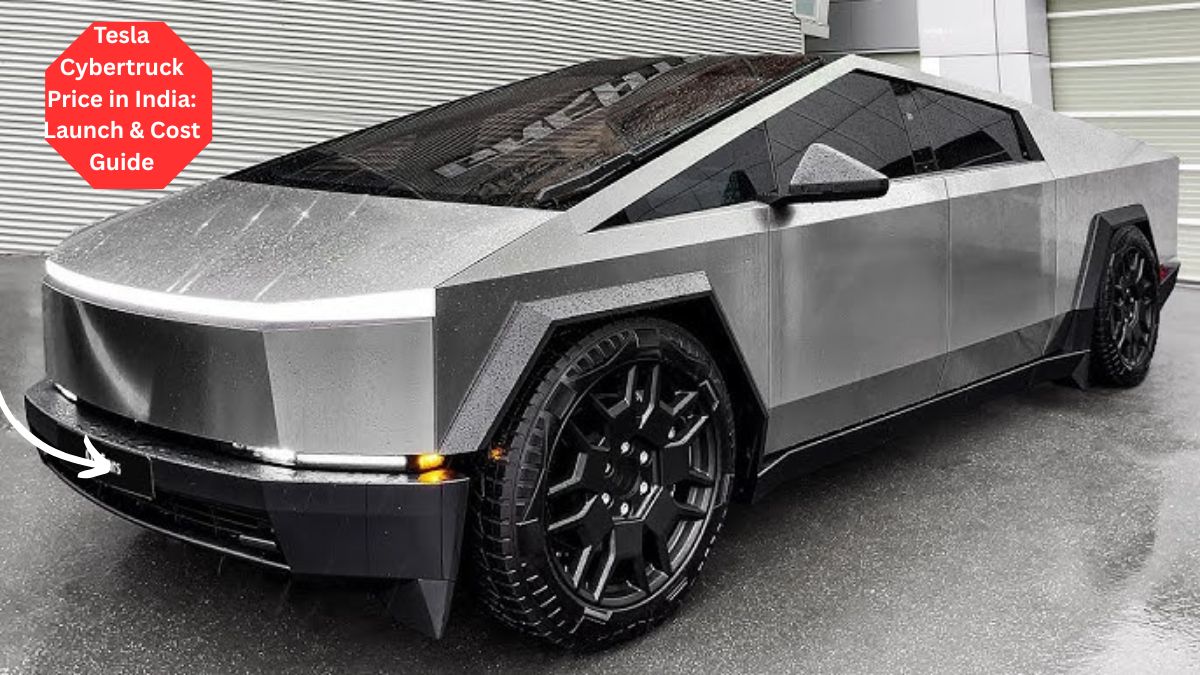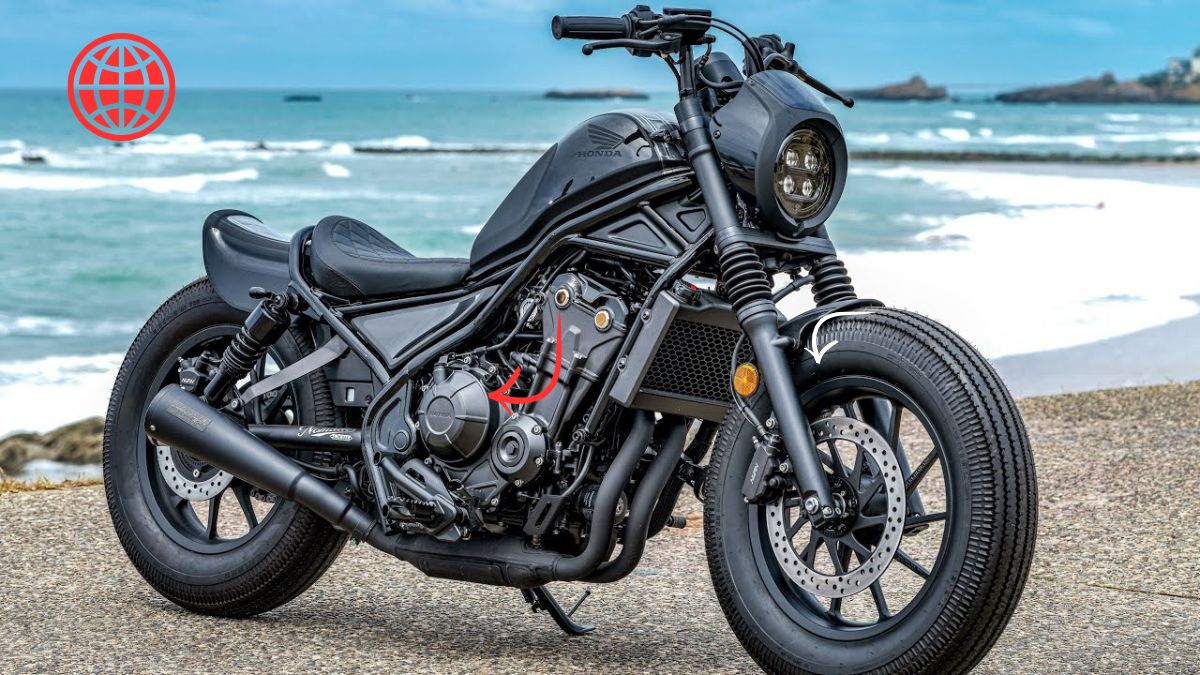The Kawasaki Ninja 300 vs KTM RC 390 are two of the best choices for entry-level sport motorcycles. They have won over many riding enthusiasts with their unique qualities and impressive abilities.
The Ninja 300 represents Japanese engineering excellence with its smooth parallel-twin engine, while the RC 390 demonstrates Austrian precision through its powerful single-cylinder engine. Both motorcycles offer attractive options for riders looking to experience sportbike performance for the first time.
In this article, we will explore the key differences between these two bikes in several important areas:
- Engine performance and power delivery
- Fuel consumption rates
- Weight distribution and handling characteristics
- Design philosophy and feature sets
- Price points and value proposition
This comparison goes beyond the specifications to determine which bike provides the best value for your money. Whether you prioritize track-day performance or daily commuting comfort, you’ll find detailed insights to help you decide between these two exceptional machines.
Now, let’s take a closer look at what makes each bike special and figure out which one truly offers more value for your investment.
Engine Performance and Power Output
The KTM RC 390 packs a punch with its 373.27 cc single-cylinder engine, delivering a robust 42.9 bhp at 9000 rpm. This power configuration creates an aggressive riding experience with quick throttle response and strong mid-range torque.
The Kawasaki Ninja 300 employs a 296 cc parallel-twin engine, producing 38.88 bhp at 11000 rpm. The twin-cylinder setup offers:
- Smoother power delivery
- Better engine refinement
- Reduced vibrations at higher speeds
- Linear acceleration curve
These distinct engine characteristics shape each bike’s personality on the road. The RC 390’s single-cylinder setup provides instant power bursts, making it ideal for spirited riding and track days. The Ninja 300’s parallel-twin configuration delivers a more balanced performance, suited for both city commuting and highway cruising.
The power difference becomes noticeable during acceleration, with the RC 390’s higher output translating to quicker 0-60 times. The Ninja 300 compensates with its refined power band, offering better control for newer riders learning to manage engine output.
Technology and Features
| Feature | Ninja 300 | RC 390 |
|---|---|---|
| Slipper Clutch | Yes | Yes |
| ABS | Dual-channel | Dual-channel |
| Display | Analog-digital | Full-color TFT |
| Ride-by-Wire | No | Yes |
| Quick Shifter | No | Yes (Optional) |
| Smartphone Connectivity | No | Yes |
Fuel Efficiency and Mileage
The KTM RC 390 delivers an impressive 29 kmpl fuel efficiency, outperforming the Ninja 300’s 25 kmpl. This difference translates to significant savings at the pump:
- A 500km monthly riding distance saves ₹400-500 with the RC 390
- The RC 390’s larger 13.7L tank provides extended range between refills
- Ninja 300’s twin-cylinder setup demands more frequent fuel stops
The RC 390’s superior fuel economy makes it an attractive choice for daily commuters. Urban riders benefit from fewer refueling stops, while touring enthusiasts can stretch their tank range further on highway runs. The RC 390’s combination of higher power output and better fuel efficiency creates a compelling value proposition for budget-conscious riders seeking performance without compromising economy.
However, it’s worth noting that there are also other options for those looking to maximize their fuel efficiency, such as opting for public transportation or considering some of the most fuel-efficient motorcycles available in the market.
Real-world mileage varies based on riding style, with aggressive riding reducing efficiency by 15-20% for both bikes.
Weight and Handling
The Kawasaki Ninja 300 weighs 179 kg, while the KTM RC 390 is lighter at 172 kg. This 7 kg difference has a noticeable effect on how each bike handles.
How the RC 390’s Lighter Frame Helps with Handling
The RC 390’s lighter frame means:
- It can change direction more quickly
- It’s easier to maneuver in tight spaces
- Less physical effort is needed when handling the bike at low speeds
How the Ninja 300’s Heavier Build Helps with Stability
The Ninja 300 makes up for its heavier weight with:
- Better stability when riding at high speeds
- A more secure feeling when going through corners
- A forgiving nature that helps new riders
Both bikes have well-designed chassis that provide good balance. The RC 390’s aggressive riding position and lighter weight make it perfect for spirited riding, while the Ninja 300’s slightly heavier build offers reassuring stability for beginners who are learning how to ride sport bikes.
The RC 390’s sharp handling qualities reward experienced riders who are pushing their limits, but the Ninja 300’s predictable behavior helps build confidence as skills develop gradually.
Design and Features
The KTM RC 390 has a bold, race-inspired look with sharp angles and a unique split LED headlight. Its aerodynamic shape features built-in winglets and a compact tail, giving it a modern streetfighter appearance.
The Ninja 300, on the other hand, retains Kawasaki’s classic sportbike style with its smooth curves and dual headlights. Its traditional design appeals to riders who appreciate timeless motorcycle aesthetics.
Key Feature Comparison:
| Feature KTM RC 390 Kawasaki Ninja 300 Instrument Cluster | Full-color TFT display with Bluetooth connectivity | Analog-digital combo meter |
| Lighting | All-LED lighting with DRLs | Halogen headlamps, LED tail light |
| Ergonomics | Aggressive riding position, clip-on handlebars | More relaxed seating, higher handlebar position |
The RC 390’s tech-forward approach includes traction control and cornering ABS, while the Ninja 300 focuses on proven mechanical reliability with standard ABS. These design choices directly impact rider comfort and confidence during both city commutes and sporty weekend rides.
Pricing and Value for Money
The KTM RC 390 is priced at ₹3,23,006 (ex-showroom), making it ₹20,000 cheaper than the Ninja 300, which costs ₹3,43,000. This price difference becomes more important when you consider the RC 390’s better power output and advanced features.
The RC 390 delivers exceptional value with its:
- Larger 373.27cc engine
- Higher power output (42.9 bhp)
- Advanced TFT display
- Traction control system
- Cornering ABS
The Ninja 300 justifies its premium pricing through:
- Refined parallel-twin engine
- Proven reliability record
- Strong resale value
- Lower maintenance costs
- Extensive dealer network
Engine and Performance Comparison
| Specification | Kawasaki Ninja 300 | KTM RC 390 |
|---|---|---|
| Engine Type | 296cc, Parallel-Twin | 373cc, Single-Cylinder |
| Max Power | 39 PS @ 11,000 rpm | 44.9 PS @ 9,000 rpm |
| Max Torque | 26.1 Nm @ 10,000 rpm | 37 Nm @ 7,000 rpm |
| Gearbox | 6-Speed | 6-Speed |
| Cooling | Liquid-Cooled | Liquid-Cooled |
Your investment choice depends on riding priorities. The RC 390 offers cutting-edge technology and superior performance metrics at a lower price point. The Ninja 300 banks on long-term ownership benefits and established market presence, despite its higher initial cost.
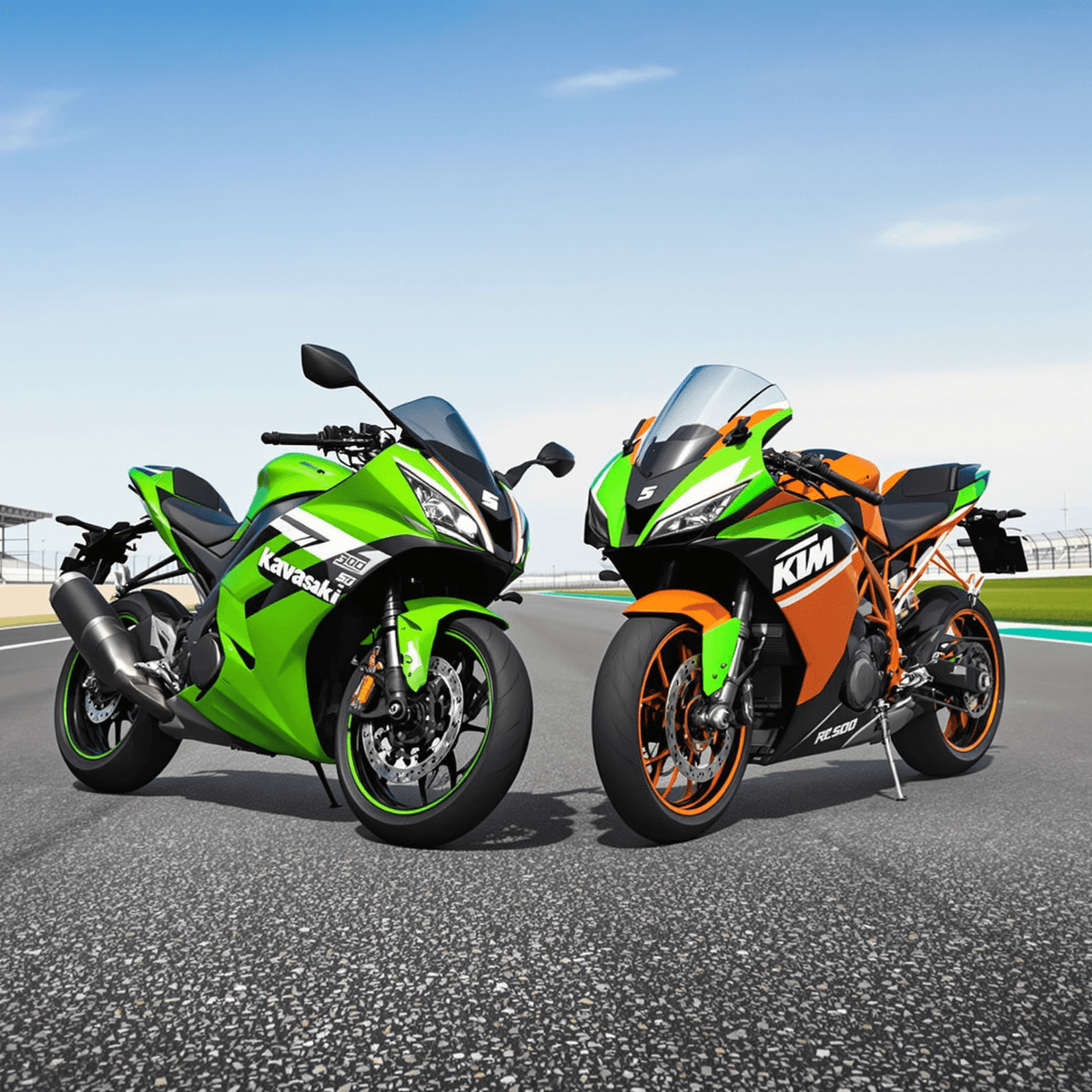
Riding Experience and Suitability
The Kawasaki Ninja 300 delivers a smoother, more refined riding experience thanks to its parallel-twin engine configuration. You’ll notice less vibration at higher speeds, making it ideal for extended highway rides. The bike’s upright seating position reduces wrist strain during city commutes.
The KTM RC 390’s single-cylinder engine packs a punchier power delivery, creating an engaging ride for enthusiasts who crave sporty performance. Its aggressive ergonomics shine during spirited corner carving but can feel demanding during stop-and-go traffic.
City Riding Characteristics:
- Ninja 300: Lighter clutch pull, predictable power delivery
- RC 390: Quick acceleration, responsive throttle response
Highway Performance:
- Ninja 300: Stable at high speeds, reduced engine buzz
- RC 390: Strong mid-range torque, sportier riding position
The Ninja 300 suits riders seeking a gentler learning curve, while the RC 390 caters to those ready to embrace a more dynamic riding experience.
Maintenance and After-Sales Support
The Kawasaki Ninja 300 requires servicing every 6,000 kilometers, with costs ranging from ₹3,000 to ₹5,000 per service. On the other hand, the KTM RC 390 needs maintenance every 5,000 kilometers, with service costs typically between ₹2,500 and ₹4,500.
Spare Parts Pricing and Durability
Kawasaki’s spare parts prices are 15-20% higher than KTM’s, but they offer better durability. The Ninja 300’s parallel-twin engine design needs fewer replacements compared to the RC 390’s single-cylinder setup.
Dealership Network and Service Availability
KTM has a larger dealership network across India with:
- 460+ service centers
- Faster spare parts availability
- Dedicated service apps
Kawasaki has:
- 280+ authorized service points
- Premium service quality
- Longer waiting periods for parts
Manufacturing and Price Impact
The maintenance costs of the RC 390 benefit from KTM’s localized manufacturing, while the Ninja 300’s parts face import-related price increases. Both bikes show dependable long-term performance when serviced on schedule.
Conclusion
The choice between the Kawasaki Ninja 300 and KTM RC 390 comes down to your specific riding needs and preferences.
For performance enthusiasts:
- KTM RC 390 delivers higher power output (42.9 bhp)
- Lighter weight at 172 kg
- More aggressive riding position
- Better value at ₹3,23,006
For balanced riding experience:
- Ninja 300’s parallel-twin engine offers smoother power delivery
- Traditional styling appeals to classic sport bike lovers
- Better suited for daily commuting
- Proven reliability record
The RC 390 stands out as the clear winner in pure performance metrics and price point. The Ninja 300 excels in refinement and everyday usability.
Before making your decision:
- Schedule test rides for both motorcycles
- Consider your primary usage (commuting vs weekend rides)
- Factor in your riding experience level
- Evaluate local dealer support in your area
Both bikes are strong contenders in India’s entry-level sportbike segment, competing well against alternatives like the BMW G310RR.
FAQs Kawasaki Ninja 300 vs KTM RC 390
What are the key engine performance differences between the Kawasaki Ninja 300 and KTM RC 390?
The Kawasaki Ninja 300 features a 296 cc parallel-twin engine producing 38.88 bhp at 11,000 rpm, while the KTM RC 390 comes with a larger 373.27 cc single-cylinder engine delivering 42.9 bhp at 9,000 rpm. The KTM’s higher displacement and power output offer a more dynamic riding experience compared to the Ninja 300.
How do the fuel efficiencies of Kawasaki Ninja 300 and KTM RC 390 compare?
The Kawasaki Ninja 300 offers a mileage of approximately 25 kmpl, whereas the KTM RC 390 is more fuel-efficient with around 29 kmpl. This makes the KTM RC 390 more economical for daily commuting and longer rides, impacting overall cost of ownership positively.
Which motorcycle is lighter and how does weight affect handling?
The KTM RC 390 weighs about 172 kg, making it lighter than the Kawasaki Ninja 300 which weighs around 179 kg. The lighter weight of the KTM enhances maneuverability and rider confidence, especially beneficial for beginners and intermediate riders navigating city traffic or twisty roads.
What are the design and feature differences between Kawasaki Ninja 300 and KTM RC 390?
The KTM RC 390 boasts an aggressive styling with modern design elements like advanced instrument clusters and lighting systems, while the Kawasaki Ninja 300 offers a sporty yet traditional look. Both bikes focus on ergonomics to enhance rider comfort, but the KTM leans more towards cutting-edge technology enhancing overall rider experience.
How do pricing and value for money compare between Kawasaki Ninja 300 and KTM RC 390 in India?
In India, the ex-showroom price for the Kawasaki Ninja 300 is around ₹3,43,000, slightly higher than the KTM RC 390 priced at approximately ₹3,23,006. Considering features, performance, and fuel efficiency, the KTM RC 390 generally provides better value for money for buyers prioritizing power and economy.
Which bike is more suitable for beginners or daily commuting – Kawasaki Ninja 300 or KTM RC 390?
Both motorcycles are excellent entry-level sportbikes; however, the Kawasaki Ninja 300 offers a smoother ride quality that suits beginners well due to its manageable power delivery. The KTM RC 390 caters to riders seeking spirited riding with higher performance but still remains accessible for intermediate riders. For daily commuting with comfort in city traffic, both bikes perform admirably depending on rider preference.

